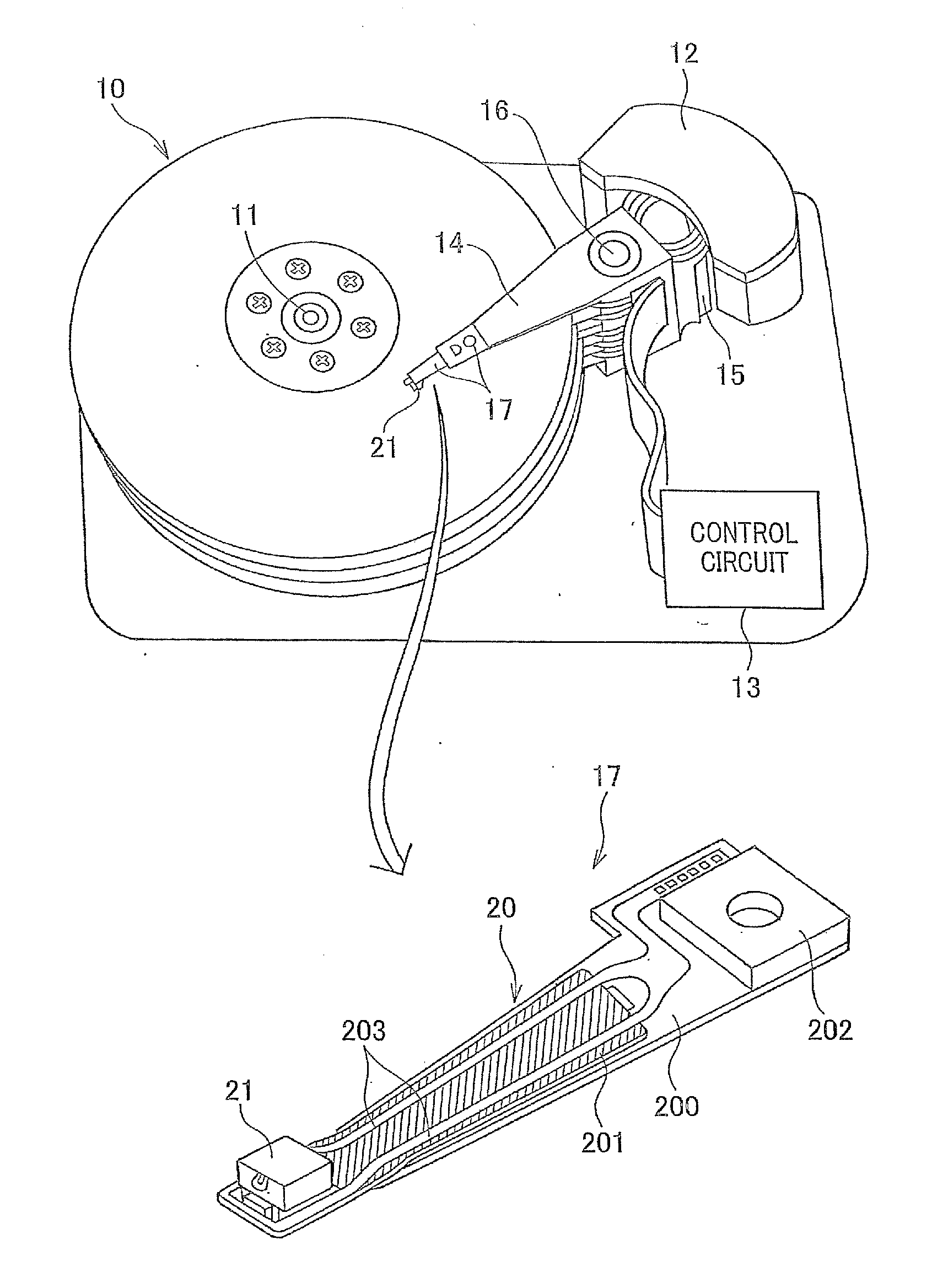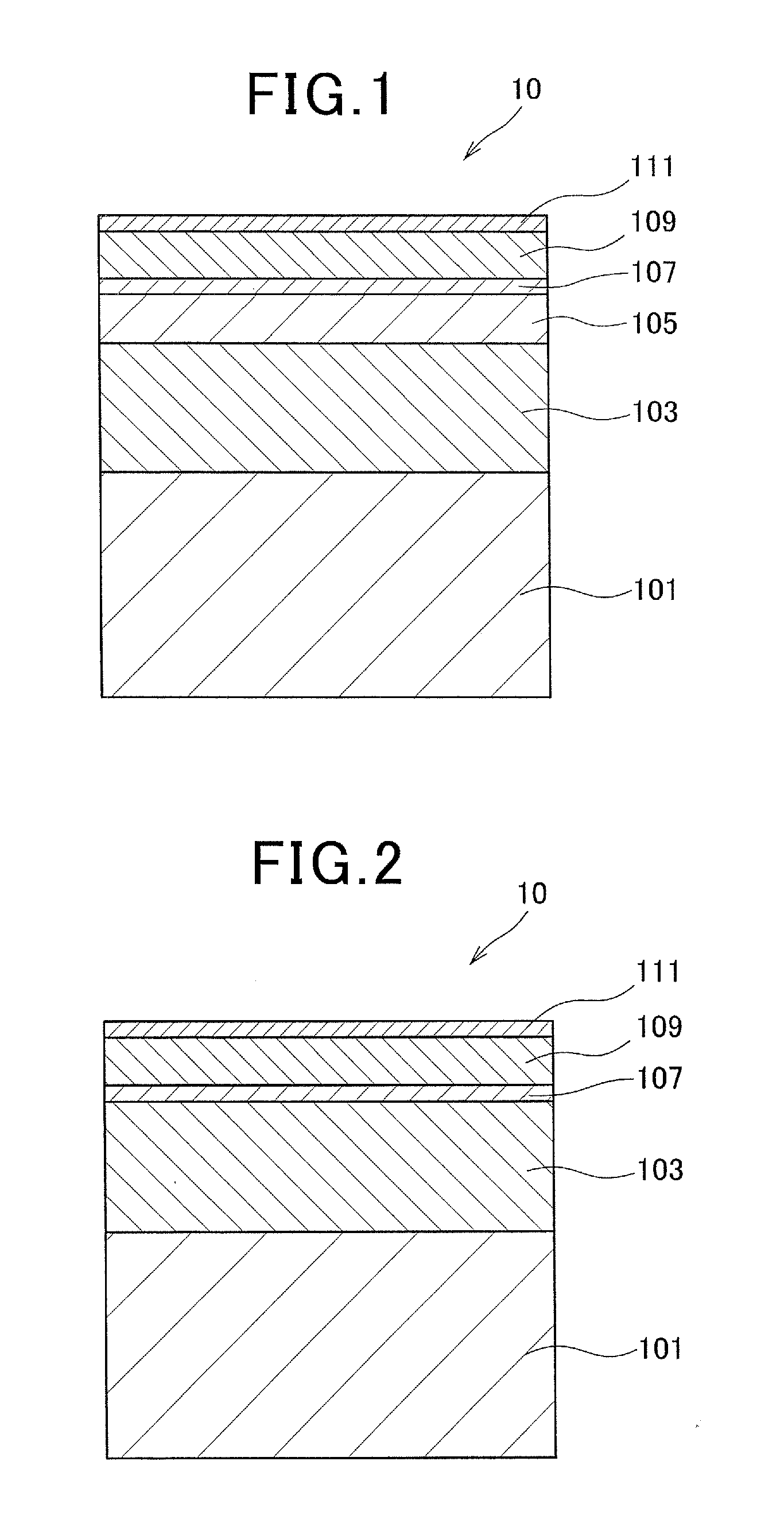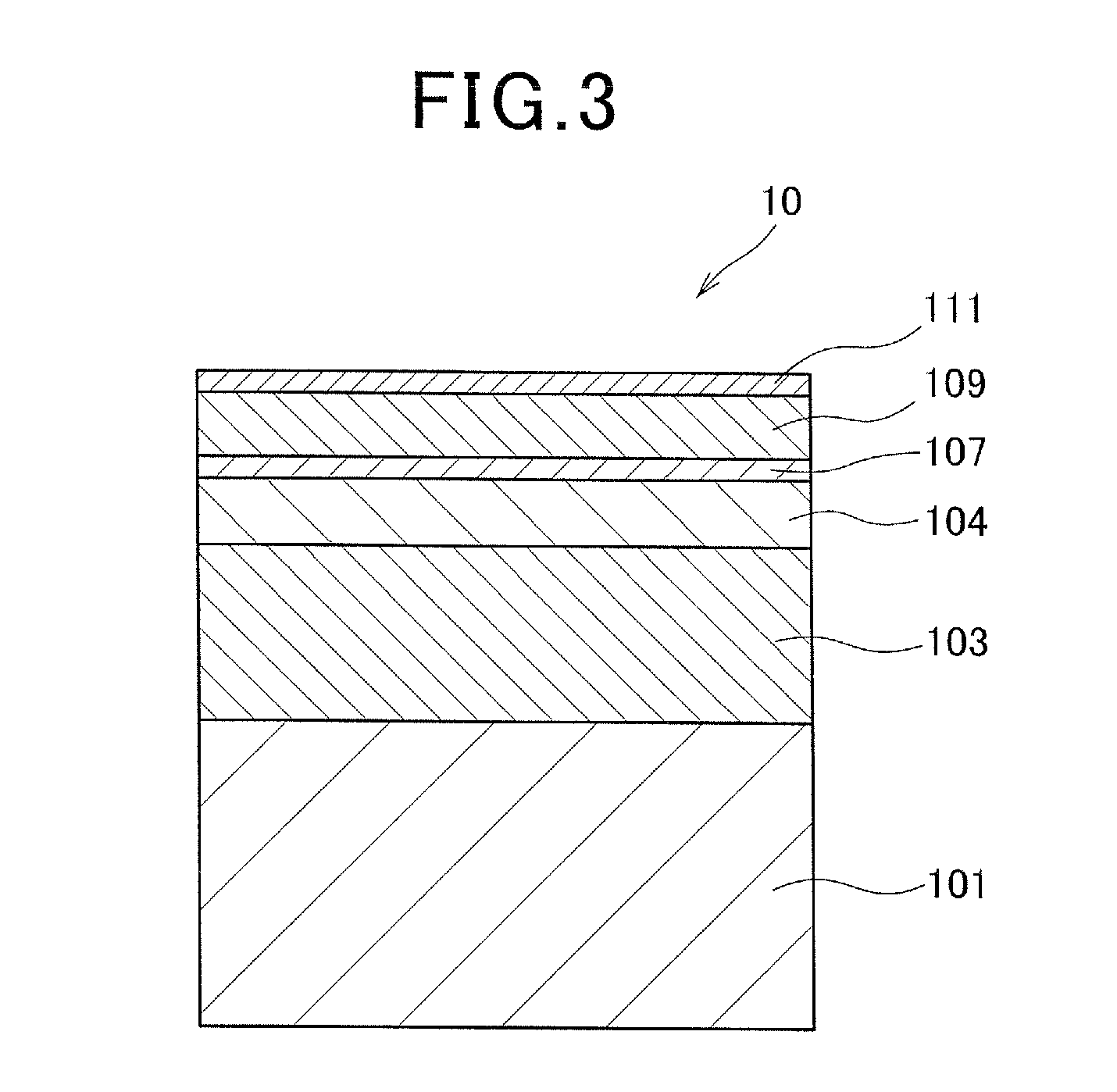Thermally-assisted magnetic recording medium and magnetic recording/reproducing device using the same
a technology of magnetic recording medium and magnetic recording/reproducing device, which is applied in the field of magnetic recording medium, can solve the problems of thermal stability deterioration, disassembly of magnetization directions, and deterioration of thermal stability
- Summary
- Abstract
- Description
- Claims
- Application Information
AI Technical Summary
Benefits of technology
Problems solved by technology
Method used
Image
Examples
first embodiment
[0140]FIG. 1 is a cross-sectional view schematically illustrating a preferable configuration example of a first embodiment of a TAMR medium of the present invention. As illustrated in FIG. 1, a TAMR medium 10 of the present invention is configured with a lamination structure in which a soft under layer (SUL) 103, a thermal barrier layer 105, a magnetization direction arrangement layer 107, a magnetic recording layer 109, a protective layer 111 are laminated in this order on a substrate 101.
[0141](Description of Substrate 101)
[0142]For the substrate 101 of the present invention, glass, aluminum, silicon, plastic, or the like can be used. Also, a composite substrate can be used as well in which a metal, a ceramic, or the like is deposited on a substrate made of a hard material. A thickness of such substrate 101 is not limited in particular; however, the thickness is set to, for example, approximately 0.5-1.0 mm. As a configuration of the substrate 101, a configuration in a disk-shape ...
second embodiment
[0170]FIG. 2 is a cross-sectional view schematically illustrating a preferable configuration example of a second embodiment of the TAMR medium of the present invention. As illustrated in FIG. 2, a TAMR medium 10 of the second embodiment is configured with a lamination structure in which a SUL 103, a magnetization direction arrangement layer 107, a magnetic recording layer 109, and a protective layer 111 are laminated in this order on a substrate 101.
[0171]A different point of the TAMR medium 10 of the second embodiment illustrated in FIG. 2 from that of the first embodiment illustrated in the above-described FIG. 1 is that the thermal barrier layer 105 is eliminated and is not formed in the TAMR medium 10 of the second embodiment. Since the TAMR medium 10 of the second embodiment has the same configuration as the TAMR medium 10 of the above-described first embodiment other than the point, detailed description of each of the configuration layers herein is omitted.
[0172]Also in the TA...
third embodiment
[0174]FIG. 3 is a cross-sectional view schematically illustrating a preferable configuration example of a third embodiment of the TAMR medium of the present invention. As illustrated in FIG. 3, a TAMR medium 10 of the third embodiment is configured with a lamination structure in which a SUL 103, a heat sink layer 104, a magnetization direction arrangement layer 107, a magnetic recording layer 109, and a protective layer 111 are laminated in this order on a substrate 101.
[0175]A different point of the TAMR medium 10 of the third embodiment illustrated in FIG. 3 from that of the first embodiment illustrated in the above-described FIG. 1 is that a heat sink layer 104 is formed as substitute for the thermal barrier layer 105. Other than the point, the TAMR medium 10 of the third embodiment has the same configuration as the TAMR medium 10 of the above-described first embodiment.
[0176]As a material used for the heat sink layer 104, a simple substance and an alloy, etc. of Cu, Ag, and Au c...
PUM
| Property | Measurement | Unit |
|---|---|---|
| thickness | aaaaa | aaaaa |
| thickness | aaaaa | aaaaa |
| thickness | aaaaa | aaaaa |
Abstract
Description
Claims
Application Information
 Login to View More
Login to View More - R&D
- Intellectual Property
- Life Sciences
- Materials
- Tech Scout
- Unparalleled Data Quality
- Higher Quality Content
- 60% Fewer Hallucinations
Browse by: Latest US Patents, China's latest patents, Technical Efficacy Thesaurus, Application Domain, Technology Topic, Popular Technical Reports.
© 2025 PatSnap. All rights reserved.Legal|Privacy policy|Modern Slavery Act Transparency Statement|Sitemap|About US| Contact US: help@patsnap.com



